Lab-Grown diamond
Diamonds, the ultimate symbols of perfection and purity, are composed of pure crystallized carbon, making them the most precious stones in the world.
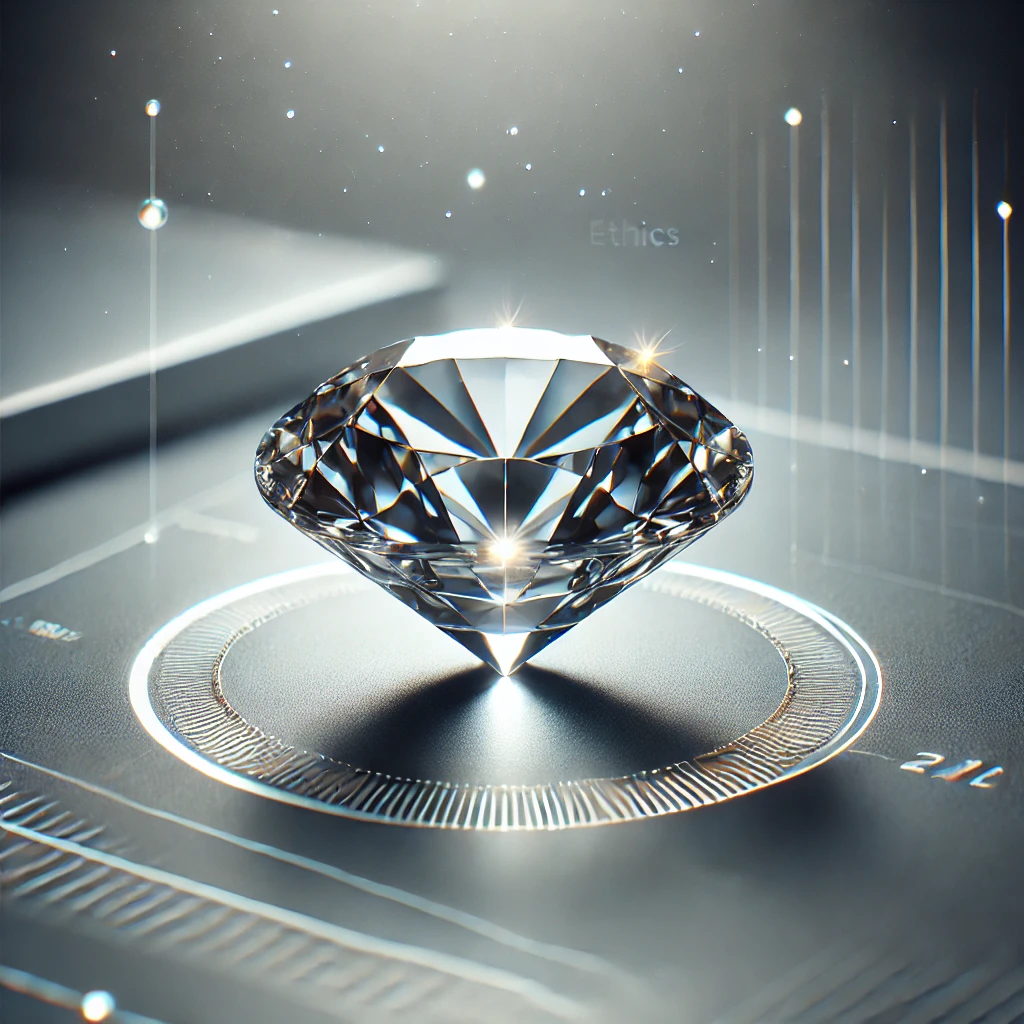
HIGH CLARITY DIAMONDS
Lab-grown diamonds, also known as lag-grown diamonds, recreate the natural conditions required for their formation using cutting-edge technology, but without the negative impacts of mining. This innovative process mimics the natural process, resulting in diamonds with the same chemical, physical, and optical properties as those mined from the earth. The only difference is their ethical origin.
Thanks to this technological mastery, we have chosen to offer only high clarity diamonds, graded D, E and F. These levels of excellence, often inaccessible in traditional jewelry, are now offered at fair prices, making luxury both responsible and affordable.
NO MINING
The diamond industry is often associated with an unbalanced supply chain, raising significant ethical and environmental questions. Furthermore, the traceability of some natural diamonds remains uncertain, making it difficult to know whether they come from conflict zones or are the result of abusive mining practices.
Fortunately, there's a responsible alternative: lab-grown diamonds. These gems, the true "twins" of natural diamonds, offer all their brilliance and beauty without the need for mining.
By choosing these diamonds, we eliminate the social and environmental impacts linked to the exploitation of natural resources, while committing to building a more ethical and sustainable supply chain, faithful to the values of our time.
CREATED BY EARTH, PRODUCED BY MAN: CVD AND HPHT TECHNOLOGIES
Our diamonds are created using Chemical Vapor Deposition (CVD) and High Pressure - High Temperature (HPHT) technologies.
In the CVD process, a diamond seed (lab-grown diamond dust) is placed in a high-temperature vacuum chamber filled with a carbon-rich gas. This gas is ionized, allowing pure carbon to slowly deposit onto the seed, atom by atom, layer by layer, gradually forming the diamond.
In HPHT, the diamond seed (also lab-grown diamond dust) is exposed to extreme pressure and temperature conditions. Under these conditions, the seed melts, allowing a larger diamond to form around it, before cooling to reveal the final diamond.
CHARACTERISTICS: THE 4 C'S
No two diamonds in our collection are alike; each piece is completely unique, with its own unique inclusions and growth patterns. The 4 Cs are the universal guide to understanding the characteristics and quality criteria of each diamond. Here's a detailed overview.
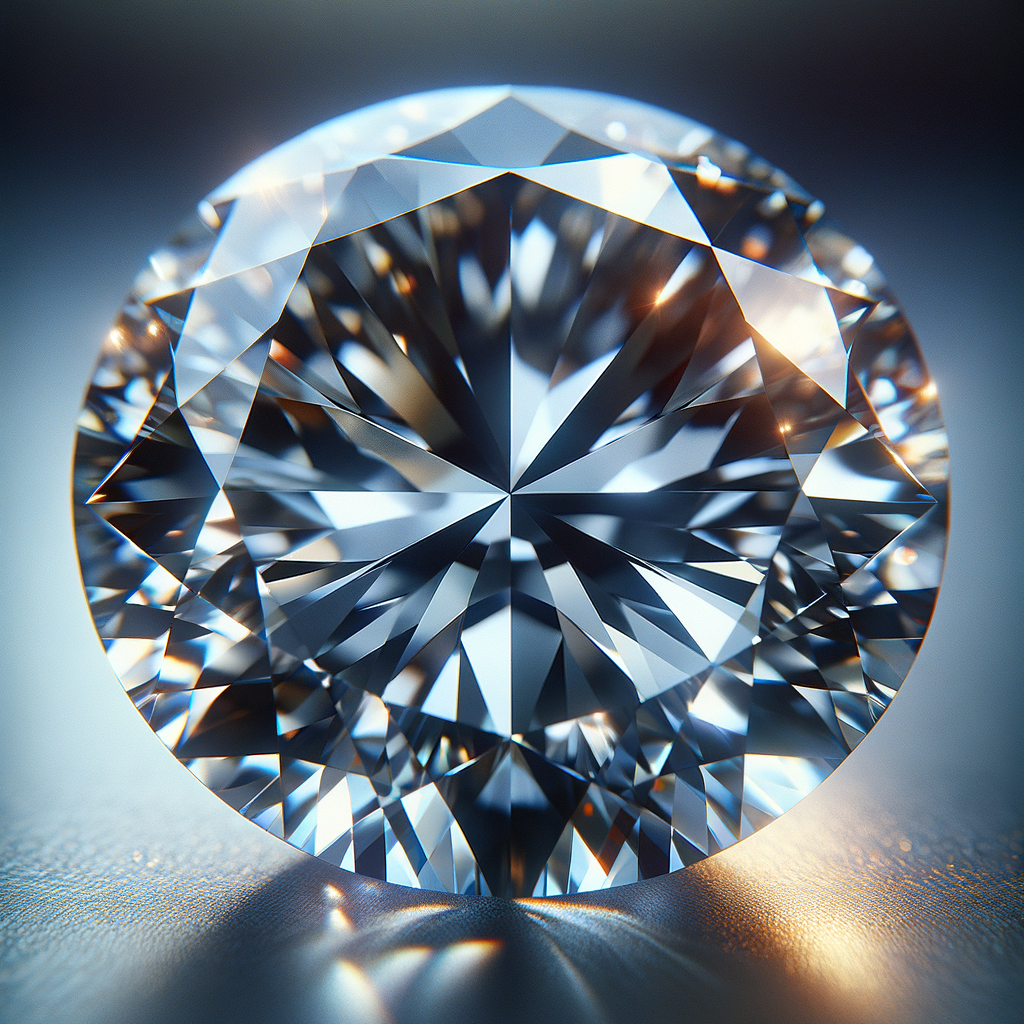
(CUT) SIZE: CUT INTO 57 SPARKLING FACETS
We place particular emphasis on the quality of the cut, which determines the brilliance of the diamond. The more facets a diamond is cut with, the more it captures and reflects light, creating a mesmerizing sparkle. Each facet acts like a mirror, reflecting light from one facet to the next to maximize brilliance.
All the diamonds in our collection are cut and polished by hand, a meticulous and artistic process. We favor the round brilliant cut, with 57 facets, to ensure that each diamond shines exceptionally thanks to perfect angles.
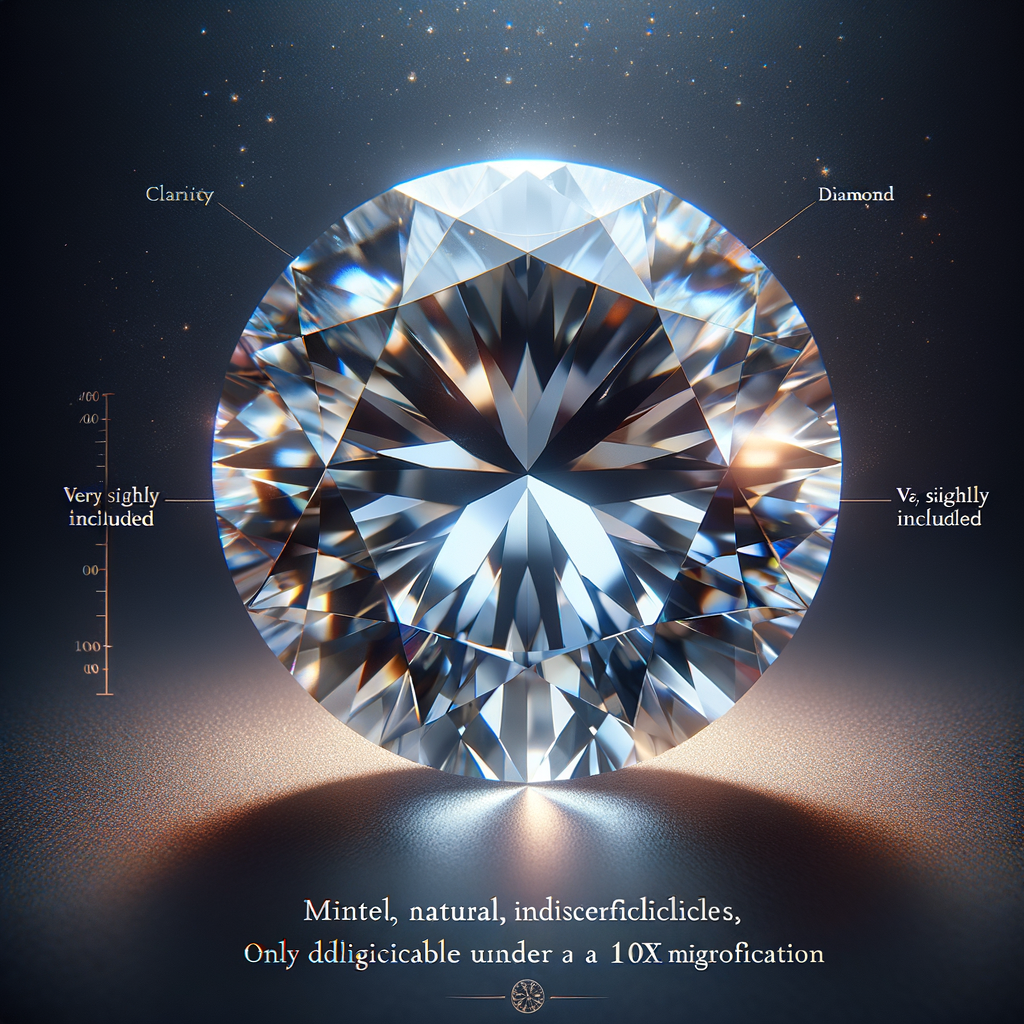
(CLARITY) PURITY: VERY SMALL NATURAL AND INVISIBLE INCLUSIONS
During their formation, diamonds may contain small, invisible imperfections called inclusions, created by uncrystallized carbon. These inclusions, invisible to the naked eye and generally only visible with a 10x magnifying glass or microscope, make each diamond unique.
The fewer inclusions, the purer the stone, and the higher its value. Since inclusions interfere with the refraction and reflection of light, the lower the clarity designation, the duller the diamond will appear.
On the international scale, our diamonds are classified in the categories VS (very slightly included) (1 and 2), known as “very slightly included”, or VVS (very, very slightly included) (1 and 2), known as “very, very slightly included”, thus guaranteeing a perfect balance between beauty and character.
We ensure that each diamond is optimally set, so that its beauty shines in all its splendor.
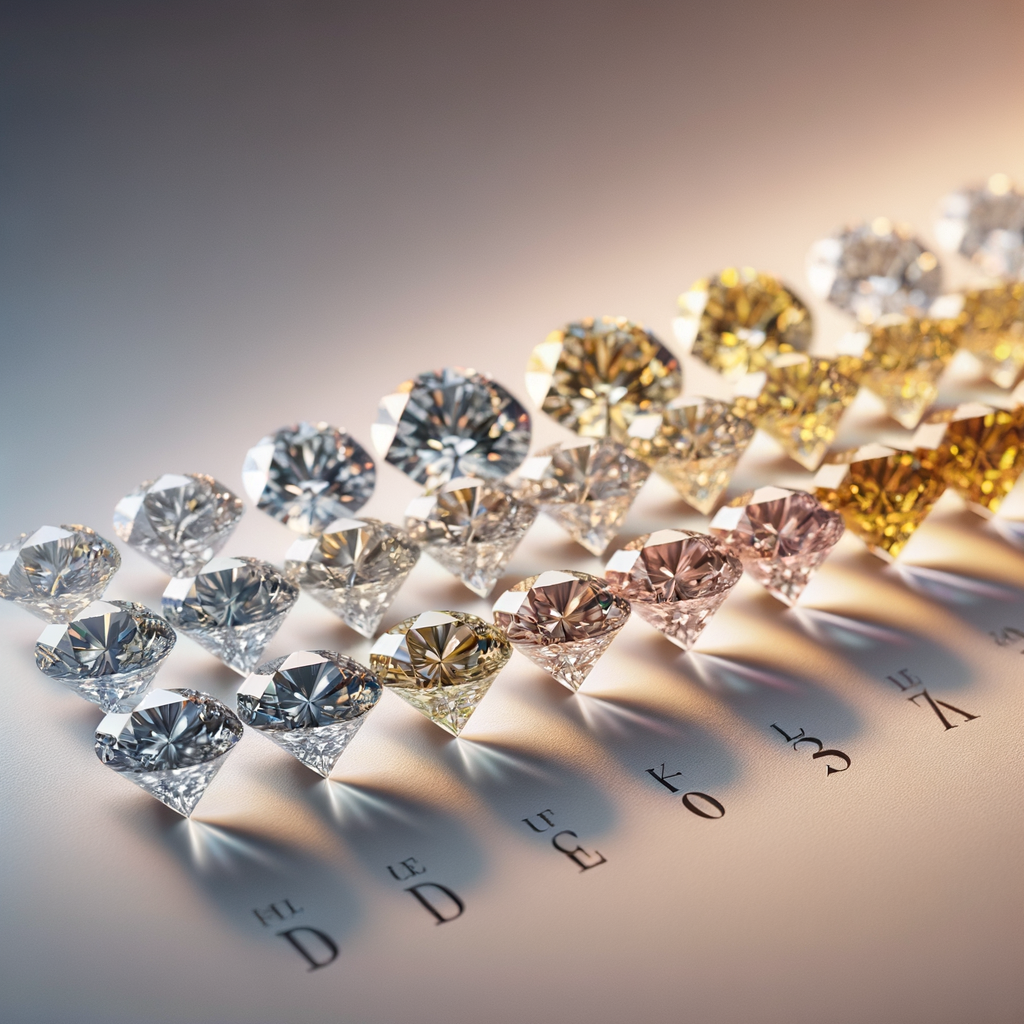
COLOR: GLACIER WHITE COLORLESS CATEGORY D, E AND F
A diamond's color refers to its natural hue. Most white diamonds have a slight yellow tint, but the more "colorless" a diamond is, the more valuable it is. The GIA (Gemmological Institute of America) color scale grades diamonds from D (colorless) to Z (warmest hue).
We select only colorless diamonds graded D, E, and F, offering a pure, icy white tone. This clarity level allows for perfect light refraction, giving each diamond a magnetic sparkle.
Of the four criteria, color is one of the most important, as it directly influences the stone's appearance. Diamonds with less pure color may exhibit a slight yellow tint, instead of the desired bright white.
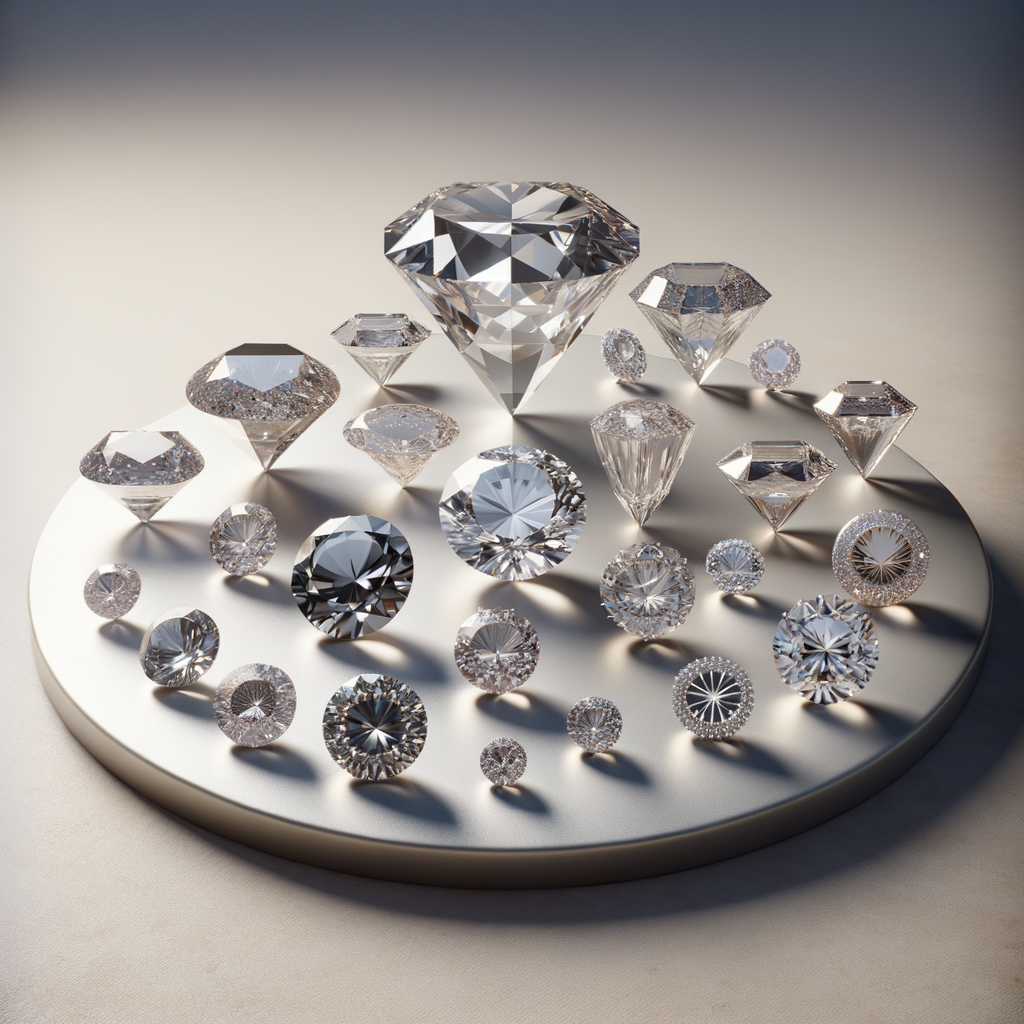
CARAT: LIGHT SKIN DIAMONDS
The carat, although it reflects the size of a diamond, is primarily a unit of measurement for its weight. One carat is equal to 200 milligrams, or one-fifth of a gram.
In our collection of fine and minimalist jewelry, each piece has been designed to combine discretion and everyday accessibility, embodying the idea of "skin diamonds." With diamonds ranging from 0.05 carat to 0.5 carat, each piece reflects the spirit of the modern woman leading a sporty lifestyle, combining luxury and simplicity in an effortless approach.
CRAFTSMANSHIP
The manufacturing process for our fine jewelry collection combines meticulous craftsmanship and cutting-edge technology. After the gold is cast, each piece of jewelry is carefully soldered by hand. Each detail is then polished to remove impurities and perfect the piece's shape.
The diamonds are then hand-set by our expert jewelers. Using a special paste and stone, they remove any traces of scratches from the file, followed by a final polish with a special cloth, giving each piece its perfect shine.
14K RECYCLED SOLID GOLD
-
DURABLE AND ROBUST: RECYCLED GOLD, A SAFE VALUE
"All that glitters isn't gold"—that's true... but what if it was recycled gold? Our fine jewelry collection is crafted from 100% recycled gold, combining superior quality and sustainability with a contemporary twist.
Gold is measured in carats. A carat represents one twenty-fourth of the mass of a precious metal. We use 14-karat gold, which means that out of 24 parts, 14 are pure gold, and the other 10 are alloys that add strength to the piece. This blend is essential for creating jewelry that stands the test of time.
Gold also takes on different colors depending on the alloy. In our collection, you'll find white gold and yellow gold. Yellow gold is the natural color of gold, while white gold is a platinum alloy, plated with rhodium to give it a brilliant, elegant shine.
-
ENVIRONMENTALLY FRIENDLY AND SOCIALLY RESPONSIBLE
Recycled gold, as the name suggests, is made from previously used metals, such as scrap metal or melted gold coins. The best part? It preserves the quality and essence of gold while supporting an environmentally and socially responsible approach.
Without mining, we eliminate the social and ethical risks associated with it. Recycled gold allows us to reduce our dependence on new raw materials and limit our impact on the planet, while giving gold a second life in the form of beautiful jewelry.
-
SUPPLY OF CERTIFIED RAW MATERIALS
We use only 100% recycled gold from sources certified and verified by recognized organizations. We rely on the Responsible Jewellery Council (RJC), the leading global organization setting standards for the jewelry industry, to ensure ethical trade and responsible supply chain management.
The recycled gold we use for our jewelry comes from foundries certified by the RJC CoC (Chain of Custody) standard.
